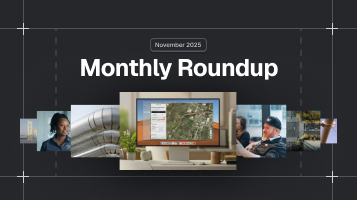4M Analytics Receives TxDOT Vendor Certification for GIS and Data Analysis
Written by

Itzik Malka
Published on
May 14, 2023


Table of contents
Texas Transportation Commission Adopts 10-year Road Construction Plan
Traffic congestion and poor road quality have plagued Texas for a long time. The problem is particularly acute in rural areas and remote communities. Road safety incidents have sparked an increasing push to improve Texas roads.
With that in mind, in 2022 Texas Governor Greg Abbott announced a decade-long $85 billion project to construct roads across the state. The plan, known as the Unified Transportation Program (UTC), is expected to make Texas's transportation infrastructure world-class.
Governor Abbott goes big on Texas road transportation infrastructure.
Governor Abbott said the project is a critical step toward addressing the diverse needs of people in Texas's rural and urban areas. He highlighted the state’s fast-paced growth and the need to meet increasing transportation needs. The program consists of a 188-page document that details construction and development across 562 sites in Texas.
The construction and repair-related projects will cover highways, maritime, aviation, and public transportation. In addition, the projects will take environmental analysis and right-of-way acquisition into consideration as well. The Texas government cannot take risks with such an extensive project.
What is the Unified Transportation Program (UTC)?
The UTC acts as a master document for the TxDOT, connecting different agendas, such as the rural, metropolitan, and even statewide long-range transportation plans. In addition, the UTP also considers the statewide transportation improvement program, which is already part of a four-year construction plan.
The UTP has been chiefly concerned with the safety and congestion issues that have plagued Texas roads. Maintaining these roads, especially in rural areas, has been a challenge for most of the authorities in the past. This project will coincide with an additional $32 billion spread across ten years to maintain and develop transportation projects.
The growth story of Texas necessitates infrastructural development.
A record number of people are moving to Texas because of increased job opportunities and perceived better quality of life. Domestic migration into Texas has increased dramatically in the last few years—since 2020, the state’s population has grown by 1.3%, compared to only 0.13% growth nationwide. With the surge in population, Texas has seen an increase in vehicular traffic, the number of cars purchased, and reliance on public transportation.
Rural highways in Texas are widely neglected, prompting complaints from local citizens. The current project aims to address this problem, expanding existing transportation corridors into four-lane divided highways. Some of the most important roads that will be reconstructed or repaired are US 59, 87, 83, 175, and 281.
As the massive infrastructure project unfolds, damage to utilities could result in litigation and unnecessary delays. To avoid complications, contractors and civil engineers must ensure they have all the necessary information about what lies below and above the ground.
Many types of infrastructure will be affected, from gas to electricity, water pipelines, telecommunication, and more. Texas officials cannot afford to embark on a project of this magnitude without accurate utility data.
What are the ramifications of this state-level program?
Whenever such an enormous program is planned, many communities will be affected. Construction projects related to highways and transportation infrastructure are highly intrusive and require digging around existing utilities. These projects are handed out to civil engineering firms and general contractors, who become responsible for risk mitigation.
Subsurface utilities are the biggest risk to construction project schedules and budgets. Like many other US states, Texas lacks adequate maps of existing utilities, meaning that contractors and civil engineers will have a difficult time ensuring they do not strike and damage assets such as gas and water lines. Finding or striking an unknown utility on a project site results in an immediate halt of work, followed by redesign and change orders.
In addition to rural highways, the program also includes improvements to metropolitan and urban transportation infrastructure. For these projects, civil engineers and general contractors must navigate utilities in densely populated regions—an even bigger challenge. Although mandated by law, calling 811 will not suffice for projects of this nature, and proceeding without adequate information could lead to disastrous and costly consequences.
Utility conflicts are bound to happen.
This state-level program does not restrict itself to public transportation and highways—it also includes aviation, rail, flight, and international trade. This means multiple entities are involved and civil engineering firms and general contractors must seek permissions from each organization. Without due diligence, utility conflicts are likely to arise—leading to additional delays and even project failure.
Acquiring reliable utility data can be an impossible challenge.
Utility data acquisition often happens just before construction begins, because sending field investigators to locate and map utilities may be the only way to get reliable data. Field investigation is very expensive, however—and putting it off until the last minute can lead to unexpected complications after construction plans are already in the final stages of development. Searching for “as-built” utility records online or at local government offices might yield helpful records, but sifting through dusty records in out-of-the-way places can prove time-consuming and frustrating—and in the end, the maps could be outdated or inaccurate.
What could be the outcome of these projects?
TxDOT is trying to make several changes to existing highways—for example, adding rumble strips to alert drivers if they stray to the shoulder. They will also install medians to prevent head-on collisions. Other improvements include implementing LED signs and radar sensors to prevent accidents.
While the highway improvements are necessary, the document does not mention possible damage to utilities.
This is yet another example of how known and unknown utilities are taken for granted, leading to disastrous consequences for both the communities where the projects will be undertaken and for the workers themselves.
Large infrastructural projects require advanced mapping solutions
The Texas project will likely create 58,000 direct and indirect jobs and will help the state improve its economy. It will also attract investors to Texas as infrastructure improves. Several benefits are associated with this project, and we hope it is fruitful.
However, ambitious projects like this one often miss the devil lurking in the details. In this case, we hope that decision-makers take the fragility of the utilities into account, especially since Texas has a lot of underground gas pipelines.
New utility mapping technology offers a simple, affordable solution. When contractors and civil engineers gain an accurate image of all the utilities in a particular area, they can help firms avoid conflict and keep projects moving forward. Access to real-time data about utilities and their owners—including infrastructure that’s no longer in use—allows stakeholders to make better decisions and avoid utility strikes and rework.

Itzik Malka
Navigating the depths beneath our feet is more than just a mission for Itzik Malka; it's a relentless passion that has led him to co-found 4M Analytics, a groundbreaking Infrastructure & Utility Mapping Tech-Company. With an entrepreneurial spirit coursing through his veins, Itzik envisions a world where the hidden infrastructures below us are not mysteries, but accessible maps that drive humanity’s progress. His pioneering drive seeks to replace blind trenching with a digital repository, revolutionizing the way we navigate underground infrastructure. By harnessing a variety of cutting edge technologies, Itzik's team is rewriting the rules, offering real-time, cost-effective data that solves one of the greatest challenges civil engineers experience today.
Recent blog posts

Our Newsletter
Join 7k infrastructure professionals
Get monthly insights on ways to build smarter, faster and safer with Utility AI.

.avif)




